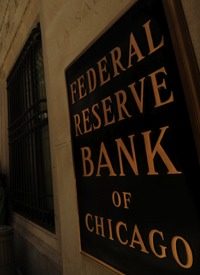
The much-anticipated, long-awaited pronouncement from the Fed yesterday confirmed what nearly everyone else expected: Things are not going swimmingly, but they’re ready to help further if the patient continues to drown.
The Federal Open Market Committee said that “the pace of economic recovery is likely to be more modest in the near term than had been anticipated … [but] to help support the economic recovery in the context of price stability, the Committee will keep constant the Federal Reserve’s holdings of securities at their current level.”
Translation: Nothing we have done yet has worked, so we’re developing some more plans just in case they are needed.
The FOMC expanded by saying “The pace of recovery in output and employment has slowed in recent months [but we] will continue to monitor the economic outlook and financial developments and will employ its policy tools as necessary to promote economic recovery and price stability.”
Translation: The economy is headed south, but we’re watching her carefully for any signs of life.
In June the Fed said that the recovery was “proceeding” nicely and that they were working on plans to keep incipient inflation in check by removing some excess reserves from the system. But the economy has “proceeded” to decline, as indicated here and here and here, which seemed to catch the Fed by surprise. The Fed’s announcement that they would take proceeds from mortgage payoffs to buy long-term government bonds “represents a significant policy shift,” according to MoneyNews.com but this is only one of several “policy options” still open to the Fed if things get worse. One of those options is to talk the continuing economic decline into reversing itself: “One pro-growth strategy would be to strengthen language in Fed policy statements that the central bank’s interest rate target is likely to remain ‘exceptionally low’ for an ‘extended period’ … [by] keeping rates near zero for even longer than investors now expect.” (Emphasis added.)
Another option in its dwindling kit of tools is “to cut the interest rate paid to banks for extra money they keep on reserve at the Fed [all the way] from 0.25 percent to zero.” That cut would of course “give banks … more incentive to lend money to customers.”
Translation: If talk doesn’t turn things around soon, another cut in interest rates of one-quarter of one percent will no doubt make the difference in whether a bank keeps its money at the Fed or loans it out to a nervous businessman facing an uncertain future.
These additional “policy options” pale into insignificance with what the Fed has already done, without measurable success: According to the Washington Post those included “massive unconventional effort[s] to drive down interest rates and prop up growth that the Fed took in late 2008 and early 2009…. [At that time] the Fed began buying Treasury Bonds, mortgage securities and other long-term assets — more than $1.7 trillion.” Eric Rosengren, president of the Federal Reserve Bank of Boston, said the Fed has additional options: “I think we have a variety of tools available, and we shouldn’t rule any tool out. If we’re uncomfortable with how long it’s going to take … we’ll have to make some adjustments to policy.”
Translation: We don’t know where we’re going but we’re making great time.
As Gary North pointed out in his members-only newsletter, only two tools will have any significant impact, both with highly inflationary consequences: forcing the banks to loan money to their customers who don’t want it and couldn’t qualify anyway, or just printing the money. North says, "If the Fed were willing to risk it, it would already have risked it. So the Fed is biding its time, hoping that things will work out."
Photo: AP Images



